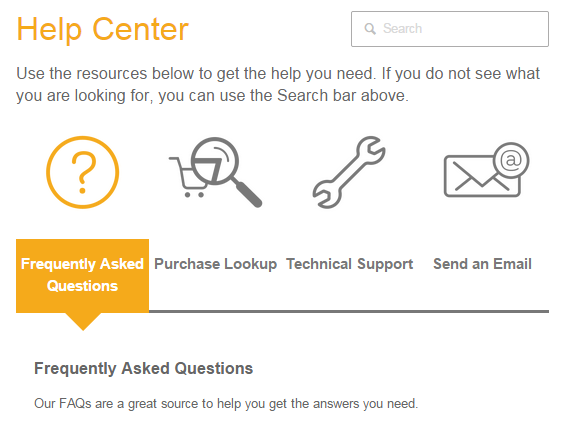There are two primary concerns with resolving customer inquiries: speed and quality. You can’t waste your customer’s time, and you must solve their problem. These two concerns are commonly at odds with each other, but there are ways to synthesize speedy and high quality responses into a world class customer experience that also saves your business money. And it all begins with measuring key performance indicators (KPIs).
Primary Customer Service KPI: Reducing Customer Contact Rates
When choosing the KPIs for your customer service operation, one metric to focus on is your customer contact rate. A customer contact rate is usually measured by taking the number of customer inquiries that occur through your ticketing and phone system in a given time period, like a month or a year, and dividing that number by the amount of paid orders during that time. The result is your contact rate. For example: if you have seven customer contacts and 100 orders in a month, your contact rate is seven percent.
The best way to reduce contact rates without sacrificing customer experience is to provide your customers self-service tools. You see, many of your customers don’t have the time to resolve their issues with a phone call, and other customers don’t want to wait for an email reply that may take up to 24 hours to get. These customers need an immediate resolution to a relatively simple challenge, and for them, self-service options work best. Effective self-service tools provide the added benefit of freeing up your customer service agents to handle more complex inquiries.
These self-service options can range from Frequently Asked Questions to forum postings to how-to videos with installation or technical support instructions. Pinpoint your most common customer inquiries, and then build your self-service pages from those issues.
For example, if customers have issues activating their software, provide copy and paste instructions or a simple video explaining the installation process.
Do customers often need their order redelivered? Provide an order lookup using just their email address so the customer can retrieve their software.
To cut your contact rate, make the most relevant information for your end users as readily available as possible.

Other ways to reduce your customer contact rate involves monitoring:
- Contact rates by region—If you notice that inquiries from certain regions have a recurring issue, then provide localized content geared toward that market. Empower your end users to find their answers quickly online and resolve the problem through self-service options.
- Contact rates by product—Are you seeing higher technical support requests for only one product? Identify the problem, and offer detailed instructions and screenshots in a FAQ or provide a simple video.
“After a positive experience, more than 85 percent of customers increased their value to the bank by purchasing more products or investing more of their assets; just as tellingly, more than 70 percent reduced their commitment when things turned sour.” – The ‘moment of truth’ in customer service, McKinsey
Secondary Customer Service KPIs: Answer Speed and First Contact Resolution
If reducing contact rates is your primary KPI, you should also monitor a couple of secondary KPIs that directly influence the primary one. These are your answer speed (how long it takes you to pick up the phone and how long it takes you to respond to an email), and your first contact resolution (FCR) rate (out of all your customer contacts, the amount that are solved with only one exchange between customer and customer service representative).
Answer speed
How quickly do you want a customer service agent to answer a phone call? We all know from personal experience how frustrating it is to sit and wait to speak to an agent on the phone. Is this really the feeling you want your customer to leave with? According to research from McKinsey, “After a positive experience, more than 85 percent of customers increased their value to the bank by purchasing more products or investing more of their assets; just as tellingly, more than 70 percent reduced their commitment when things turned sour.”
How important is it to you that your customers receive a response to their emails within twelve hours? To phrase this in a more meaningful way, how important is it to your customer? If a customer isn’t receiving a response to their email within a reasonable time frame, they may continue sending emails to your team or may even contact your customer service department through a different channel. This delay increases your customer contact rate, eats up your resources, and diminishes the customer experience.
First contact resolution
A higher FCR eliminates longer wait times, redundancy and multiple tickets. Investing in training for your team translates to satisfied end-users who receive their answer in the first contact rather than a chain of emails. Well-trained customer service representatives who can identify problems and provide answers quickly lead to shorter phone calls, lessened hold times and a more positive customer service experience.
Quality assurance (QA) is often only measured for phone support. However, if you’re looking to reduce your customer contact rate, then you should analyze QA in all aspects of direct customer interaction, including live chat and email. A long email chain may appear thorough, but it also means interacting with several customer service representatives. This wastes time and resources while providing a relatively convoluted answer for your end user. A thorough response would resolve the inquiry the first time, and provide further information which prevents any foreseeable questions or issues.
Keystone
Using key performance indicators to reduce your customer contact rate will not only improve the customer experience, but will also create a more effective customer service team.
Emily Oney is an Email Marketing Coordinator and former CSR at cleverbridge